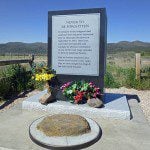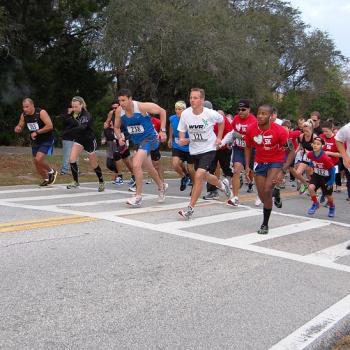Parables scholar Luise Schottroff, in her interpretation of this parable, connects the lawyer's question with the question asked by various groups of people responding to John the Baptist's preaching in Luke 3:10, 12, 14: "What should we do?" She believes that concrete, action-oriented question is the fundamental question answered by the study of Torah. That study "is not aimed at timeless ethical doctrine but at the concrete situation of those who ask, What is the action God expects, here and now?" She believes that this parable belongs within "the rich Jewish tradition of active compassion as an expression of love for God. Love for God and doing justice go together" (Schotroff, 133).
Other parables that feature this same emphasis include the parable of the Rich Man and Lazarus, another parable unique to Luke (16:19-26) and the parable of the Judgment, from the twenty-fifth chapter of Matthew.
There are several things the parable of the Good Samaritan doesn't tell us. It doesn't tell us that the man in the ditch was a Jew. It doesn't tell us why the priest and the Levite did not stop to help him. Some scholars have theorized that their ritual purity regulations prohibited them from contact with a corpse. Did they assume he was dead, or did they get close enough to see that he was still alive, but still decide not to help? We don't know. The parable doesn't tell us why the Samaritan was moved with pity. It does spend quite a bit of energy specifying the concrete actions he took to help the injured man.
The emphasis in this parable is not on helping us determine whom we are to view as our neighbor and to whom we are to show love. Its focus is on the kind of people we are to be, active neighbors, as we live on the lookout for those in need of help. The parable says, of all three observers of the man in the ditch, that they "saw him." The first two engage in a twofold action. They "see him" and then, in response to that sighting, they "pass by on the other side." The response of the third person was threefold. He "saw him," he was "moved with pity," and then he then took concrete action to express his compassion and assist the injured man. This parable is not a general lesson in loving humanity or loving one's enemies. It is a specific scenario in which a teaching about active compassion, shared by the Hebrew Scriptures and the teachings of Jesus, becomes a deed (Schotroff, 134).
The sequence of seeing, having compassion, and acting is a common one in the gospels. In Luke's gospel when Jesus "saw" the woman weeping at the death of her only son, he "had compassion for her" and brought her son to life (Lk. 7:13). When the father "saw" the prodigal son "still afar off... he had compassion on him" and ran and embraced him (Lk. 15:20). Matthew and Mark repeatedly tell us that Jesus himself, when he "saw" the crowds, had compassion on them and healed, fed, and taught them (Mt. 9:36, 14:14, 15:32; Mk. 6:34, 8:02). In the parable of the last judgment in Matthew 25:31-46, what makes some blessed is the fact that, though they didn't realize it, in seeing the poor and helping them, they saw and helped Jesus. By contrast, what makes others cursed is that they never really did see Jesus suffering and in need because they never saw the poor.
A final thing the parable doesn't tell us is whether the lawyer did as Jesus told him to, "Go and do likewise" (10:37). As contemporary people, characterized by the same combination of sincerity and shallowness as the first century lawyer, the outcome of the parable is now up to us.
Sources Consulted
Alyce M. McKenzie, The Parables for Today, Westminster John Knox Press, 2007, 51-55.
Luise Schottroff, The Parables of Jesus, Fortress Press, 2006.





